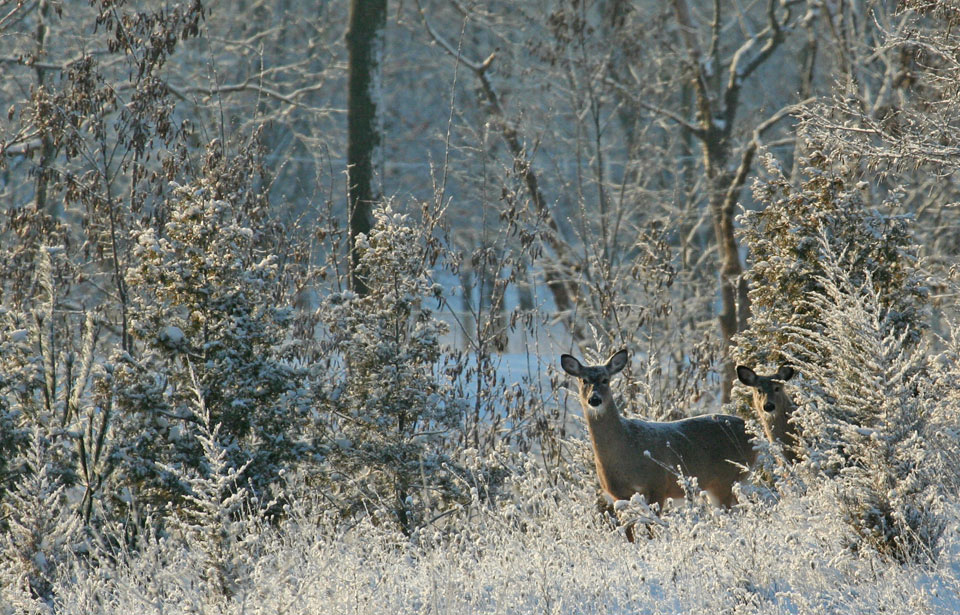Conserve Corridors
Migration corridors are narrow ribbons of land or water that bridge the gap between isolated habitats. Examples include river valleys that serve as flyways for migratory birds and hedgerows that squirrels and deer mice use to scoot between woodlots. Urban and rural, large and small, these lifelines enable wide-ranging animals to find the food, water, shelter, and space they need to survive. As human developments continue to dice, mince, and pulverize natural areas, the need for connectivity between fragmented habitats becomes more vital. To achieve that goal in your area, give the following project a try.
***
Grow a Greenway
The jungly borders sometimes found around parks, houses, shopping malls, schoolyards, industries, and farms are herbaceous highways for animal migrators. Known as wind-breaks, hedgerows, and shelterbelts, these wooded corridors — or greenways — are simply gigantic hedges. They consist of trees and shrubs, planted at least three rows wide, stretched out in long, thin lines that link woodlots, wetlands, and other key habitats. Not only do greenways serve as safe passages for species like weasels, rabbits, and voles, they also supply an abundance of food and spaces where everything from chipmunks to chickadees can rest, nest, and hide. Greenways baffle winds, too, protecting public areas from wintry drafts, providing shade for wildlife and people, and preventing soil from drying out and blowing away.
- Choose a site for your greenway, keeping in mind its primary purpose — to connect other habitats, such as thickets and marshes. Consider enhancing an existing hedgerow or other wooded corridor by planting supplemental trees and shrubs.
- Map your project site. Indicate the border where the greenway will stand. It should be at least three metres wide when fully grown. Include in your map features like buildings, roads, and habitats that will be linked.
- Consult with regional departments of wildlife, forestry, and agriculture for advice on your plan and your choice of native trees and shrubs.
- Space plants so they’ll have enough room to grow: 50 or 60 centimetres apart for shrubs, twice as far apart for trees.
- Throw neatness to the winds. Plant your greenway in gently zigzagging rows — the tallest trees in the middle rows, the shortest shrubs along the outside — with deep recesses where wildlife can hide. Arrange the trees or shrubs in each row so they alternate with those in neighbouring rows.
- Ideal trees for middle rows are white spruce, red ash, white cedar, and Manitoba maple. Include both coniferous and deciduous species for a wide variety of food and shelter. Blackberry, raspberry, elderberry, hawthorn, and buffalo-berry are suitable shrubs for outer rows.
- Water the plants regularly until they’re well established.



